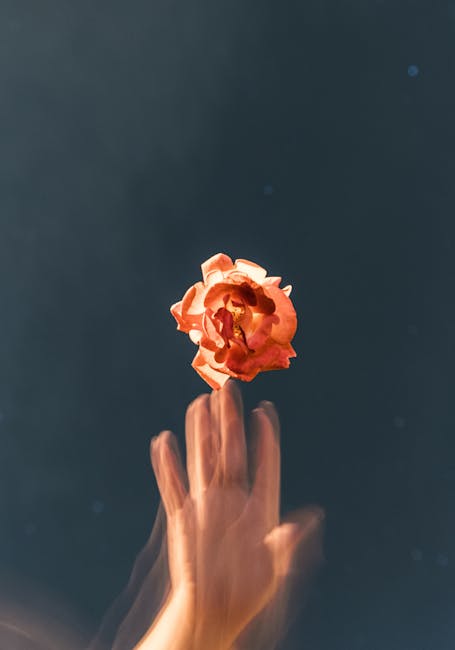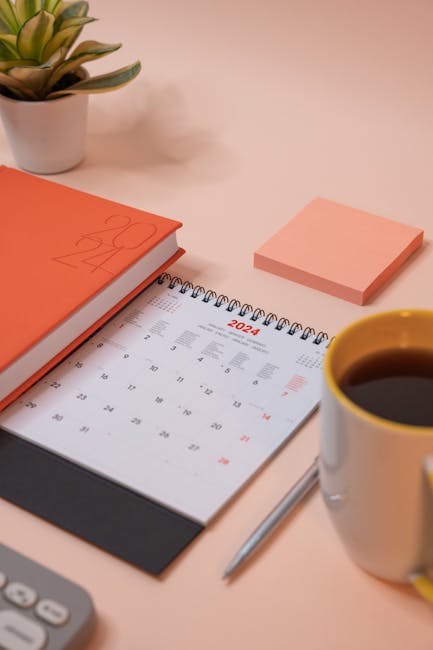How Do Colors Influence Mood And Productivity?
Ever noticed how a bright yellow room can make you feel cheerful, while a dark gray office might leave you feeling drained? That’s not a coincidence. Colors have a profound impact on our emotions, energy levels, and even how productive we are. Understanding this connection can help you design spaces that boost your mood and get your creative juices flowing. So, let’s dive into the fascinating world of color psychology and see how it shapes our daily lives.
Key Takeaways
- Colors influence emotions and behaviors in subtle but powerful ways.
- Warm colors like red and yellow evoke energy and positivity, while cool tones like blue and green promote calm and focus.
- Choosing the right colors for your workspace or home can significantly improve productivity and mood.
- Neutral tones like white and gray provide balance but can also feel sterile or uninspiring if overused.
Introduction to Color Psychology
Definition of Color Psychology
Color psychology is the study of how different hues affect human behavior, emotions, and decision-making.
It’s not just about aesthetics—colors can trigger specific feelings or even physical reactions. For instance, red can make your heart race, while blue can slow it down.
Marketers, interior designers, and even therapists use this knowledge to create environments that encourage certain moods or actions.
Overview of How Colors Influence Emotions and Behaviors
Colors work on a subconscious level.
They tap into our primal instincts and cultural associations. For example, red often signals danger or passion, while green symbolizes growth and nature.
Even small changes, like adding a pop of yellow to a dull room, can make a big difference in how you feel.
Importance of Understanding Color Psychology in Daily Life
Think about it: you spend most of your time surrounded by colors.
Whether it’s your home, office, or even the clothes you wear, these hues are constantly influencing your mood and productivity.
By understanding color psychology, you can make intentional choices that improve your mental health and overall well-being.

The Psychological Effects of Colors on Mood
Warm Colors and Their Emotional Impact
Warm colors are like a shot of espresso—they wake you up and get you moving.
Red: Passion, Energy, and Urgency
Red is intense.
It’s the color of love, but also of warning signs. It grabs your attention and raises your energy levels.
That’s why it’s often used in fast-food logos or sale signs. But too much red can feel overwhelming, so use it sparingly.
Yellow: Happiness, Optimism, and Creativity
Yellow is the color of sunshine and smiles.
It’s perfect for sparking creativity and optimism. Adding yellow accents to your workspace can make it feel more inviting and energetic.
However, too much yellow can be overstimulating, so balance it with neutral tones.
Orange: Enthusiasm and Warmth
Orange combines the energy of red with the cheerfulness of yellow.
It’s a great color for social spaces where you want people to feel comfortable and engaged.
But like its warm cousins, orange can be overpowering if overused.
Cool Colors and Their Emotional Impact
Cool colors are the chill zone of the color spectrum.
They’re calming and help you focus.
Blue: Calmness, Trust, and Focus
Blue is the ultimate productivity color.
It’s soothing and helps you concentrate, making it ideal for offices or study areas.
Research even shows that blue environments can lower stress levels and improve focus.
Green: Balance, Harmony, and Relaxation
Green is the color of nature, and it brings a sense of balance and renewal.
It’s perfect for spaces where you want to relax or recharge. Adding plants to your home or office can amplify these effects.
Purple: Luxury, Creativity, and Spirituality
Purple has a regal vibe.
It’s associated with creativity and introspection, making it a great choice for artistic spaces or meditation rooms.
But too much purple can feel heavy, so use it as an accent color.
Neutral Colors and Their Emotional Impact
Neutral colors are the unsung heroes of design.
They provide a backdrop that lets other colors shine.
White: Simplicity and Cleanliness
White is crisp and clean, but too much of it can feel sterile.
It’s great for creating a sense of space and light, especially in small rooms.
Black: Sophistication and Power
Black is bold and dramatic.
It adds depth and elegance, but too much black can feel oppressive.
Gray: Neutrality and Balance
Gray is versatile and calming, but it can also feel dull if overused.
Pair it with brighter colors to keep things interesting.

The Role of Colors in Productivity
How Colors Affect Focus and Efficiency
Colors can either help you focus or distract you.
For example, blue tones are great for concentration, while bright reds might make you feel restless.
Colors That Enhance Productivity in the Workplace
Blue for Focus and Concentration
Blue is a no-brainer for workspaces.
It’s calming and helps you stay on task.
Green for Reducing Stress and Promoting Balance
Green is perfect for high-pressure environments.
It reduces stress and creates a sense of balance.
Yellow for Boosting Creativity and Energy
Yellow is ideal for brainstorming sessions.
It sparks creativity and keeps energy levels high.
Colors to Avoid in Work Environments
Avoid overly dark or overly bright colors.
Too much black can feel oppressive, while neon colors can be distracting.

Choosing the Right Colors for Different Spaces
Home Environments and Mood Enhancement
Living Rooms: Warm and Inviting Tones
Use warm colors like orange or beige to create a cozy atmosphere.
Bedrooms: Relaxing and Calming Hues
Stick to cool tones like blue or lavender for a restful vibe.
Kitchens: Energizing and Appetizing Colors
Yellow or red can make your kitchen feel lively and inviting.
Office Spaces and Productivity Improvement
Open Workspaces: Balancing Vibrant and Neutral Tones
Mix vibrant colors with neutral tones to keep the energy balanced.
Meeting Rooms: Colors That Encourage Collaboration
Use green or blue to promote focus and teamwork.
Personal Workstations: Customizing for Individual Productivity
Choose colors that match your personal preferences and work style.
Retail and Consumer Spaces
Colors That Attract Customers
Bright colors like red and yellow grab attention.
Encouraging Specific Buying Behaviors
Soft blues and greens create a sense of trust and relaxation.

Tips for Using Color Psychology Effectively
Understanding Cultural and Personal Preferences
Colors have different meanings in different cultures.
For example, white symbolizes purity in some cultures but mourning in others.
Balancing Color Schemes for Harmony
Don’t go overboard with any one color.
Balance is key to creating a harmonious space.
Incorporating Natural Light to Enhance Color Effects
Natural light can make colors look more vibrant and inviting.
Experimenting with Accent Colors for Specific Purposes
Use accent colors to highlight certain areas or create focal points.
The Science Behind Color Therapy
What Is Color Therapy?
Color therapy, or chromotherapy, uses colors to improve mental and physical health.
How Color Therapy Is Used to Improve Mental Health
It’s often used to treat anxiety, depression, and other mood disorders.
You can learn more about how light and color affect mental health in this article.
Examples of Color Therapy in Practice
From light therapy lamps to colored meditation rooms, there are many ways to incorporate color therapy into your life.

Conclusion
Recap of How Colors Influence Mood and Productivity
Colors are more than just decoration—they’re a tool for shaping your emotions and productivity.
Encouragement to Apply Color Psychology in Daily Life
Whether you’re redecorating your home or choosing an outfit, think about how colors make you feel.
Final Thoughts on the Transformative Power of Colors
With a little knowledge, you can use colors to create spaces that inspire, energize, and calm you.
Want to dive deeper into the topic? Check out this guide on color psychology for more insights.
FAQ: How Do Colors Influence Mood and Productivity? Discover the Impact of Hues on Your Life!
How do colors affect our mood?
Colors can evoke emotional responses by stimulating certain areas of the brain. For instance, warm colors like red and orange often evoke energy and passion, while cool colors like blue and green promote calmness and relaxation. This connection is rooted in both psychology and cultural associations with colors.
Can specific colors boost productivity?
Yes, certain colors are known to enhance productivity. Blue is often associated with focus and efficiency, making it ideal for workspaces. Green, on the other hand, can reduce eye strain and promote a sense of balance, which is helpful in high-stress environments.
Why do some colors make us feel more relaxed?
Colors like blue and green are linked to nature and tranquility, which can have a calming effect on the mind. These colors lower heart rate and reduce stress levels, making them ideal for relaxation spaces like bedrooms or meditation rooms.
Are there colors that can negatively impact mood or productivity?
Yes, overly bright or intense colors like neon shades can cause overstimulation and anxiety. Similarly, excessive use of dark colors like black can sometimes feel oppressive or demotivating, depending on the context and individual preferences.
How does cultural background influence color perception?
Cultural background plays a significant role in how we perceive colors. For example, in Western cultures, white is often associated with purity, while in some Eastern cultures, it symbolizes mourning. These cultural differences can shape how colors influence mood and behavior.
What role does lighting play in how colors affect mood?
Lighting significantly impacts how colors are perceived. Natural light tends to enhance the true appearance of colors, while artificial lighting can alter their tone and intensity. This can amplify or diminish the emotional effects of a color in a given space.
Can personal preferences override the psychological effects of colors?
Absolutely! While general trends exist, individual experiences and preferences often dictate how a person reacts to a color. For instance, someone who loves yellow may find it energizing, even if it’s not universally considered a calming color.
How can businesses use color to improve productivity in the workplace?
Businesses can strategically use colors to enhance productivity by designing workspaces with shades that promote focus and creativity. For example, blue can be used in meeting rooms to encourage clear communication, while green can be added to break areas to foster relaxation.
Do colors influence children’s mood and learning ability?
Yes, colors can significantly impact children’s mood and learning. Bright, cheerful colors like yellow and orange can stimulate creativity and enthusiasm, while softer tones like pastel blue or green can help maintain focus and calmness in learning environments.
Is there scientific evidence supporting the link between colors and mood or productivity?
Yes, numerous studies in psychology and neuroscience have explored the relationship between colors and human behavior. Research has shown that colors can influence emotions, cognitive performance, and even physiological responses like heart rate and blood pressure.



